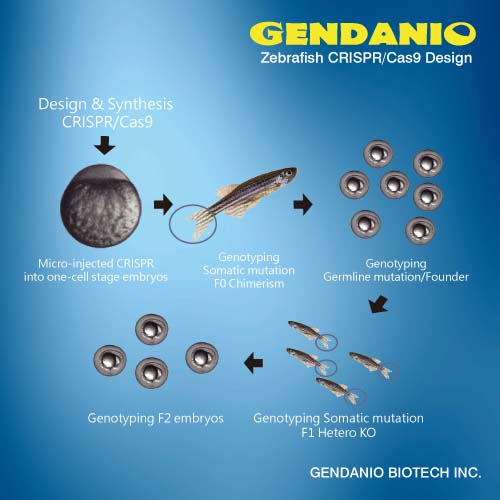ScienceDaily (Mar. 23, 2011) — Looking at the dark stripes on the tiny zebrafish you might not expect that they hold a potentially important clue for discovering a treatment for the deadly skin disease melanoma. Yet melanocytes, the same cells that are are responsible for the pigmentation of zebrafish stripes and for human skin color, are also where melanoma originates.
Craig Ceol, PhD, assistant professor of molecular medicine at the University of Massachusetts Medical School, and collaborators at several institutions, used zebrafish to identify a new gene responsible for promoting melanoma. In a paper featured on the cover of the March 24 issue of Nature, Dr. Ceol and colleagues describe the melanoma-promoting gene SETDB1.
"We've known for some time that there are a number of genes that are responsible for the promotion and growth of melanoma," said Ceol, who completed the research while a postdoctoral fellow in the lab of Howard Hughes Medical Institute investigator Leonard Zon, MD, at Children's Hospital Boston. "With existing methods, it had been difficult to identify what those genes are. By developing the new approach described in this paper, we were able to isolate SETDB1 as one of those genes."
Cases of melanoma, an aggressive form of skin cancer, have been on the rise in the United States: in 2009 alone, 68,000 new cases were diagnosed and 8,700 people died of the disease. Though it accounts for less than 5 percent of all skin cancers, it is responsible for the majority of deaths from skin cancers and has a poor prognosis when diagnosed in its advanced stages. Early signs of melanoma include changes to the shape or color of existing moles or the appearance of a new lump anywhere on the skin.
Approximately 60 percent of human melanoma cases are caused by a mutation in the BRAF gene that drives proliferation of melanocytes, the cells responsible for skin pigmentation. Because the BRAF mutation is also found in benign moles, scientists hypothesized that the single mutation alone wasn't sufficient enough to cause melanoma. Ceol and colleagues set out to locate other genes implicated in this disease by focusing on areas of the genome that were overrepresented in melanoma cells, hypothesizing that there were genes in these regions that enabled cells to grow unchecked, leading to cancerous tumors. To evaluate genes from an overrepresented region of chromosome 1, Ceol created a technique called MiniCoopR to deliver the test genes, one-by-one, to transgenic zebrafish models with the melanoma-causing BRAF mutation. These fish also lacked the tumor suppressing gene p53.
"The MiniCoopR technique allows us to build melanocytes with whatever genes we want," said Ceol. "With it, we can test individual genes by placing them in the melanocytes and observing how those genes affect melanoma growth."
Painstakingly analyzing more than 2,100 tumors from more than 3,000 zebrafish, researchers found that in fish with the SETDB1 gene, melanoma not only appeared earlier, but grew faster and invaded more deeply into the neighboring muscle and spinal tissue. With this new information, researchers screened 100 human melanomas for the SETDB1 gene. In 70 percent of the sample tumors, SETDB1 was present at high levels, indicating that SETDB1 may be involved in the formation of a majority of human melanomas."
Further analysis showed that SETDB1 produces an enzyme that turns other genes on or off and is overrepresented in other forms of cancer, such as ovarian, breast and liver cancer. "It's clear that SETDB1 is up-regulated and that it's altering the activity levels of other genes," said Ceol. "Because SETDB1 regulates several genes, we still don't know which of its targets promote melanoma."
An abnormally high level of the SETDB1 enzyme may provide clinicians a means of identifying melanoma before patients experience symptoms. It may also provide an enticing target for pharmaceutical intervention. "Enzymes like SETDB1 are particularly attractive as drug targets because they are so amenable to inhibition by small molecules, which could potentially block the cancer causing activity," said Ceol.
Source: ScienceDaily
























